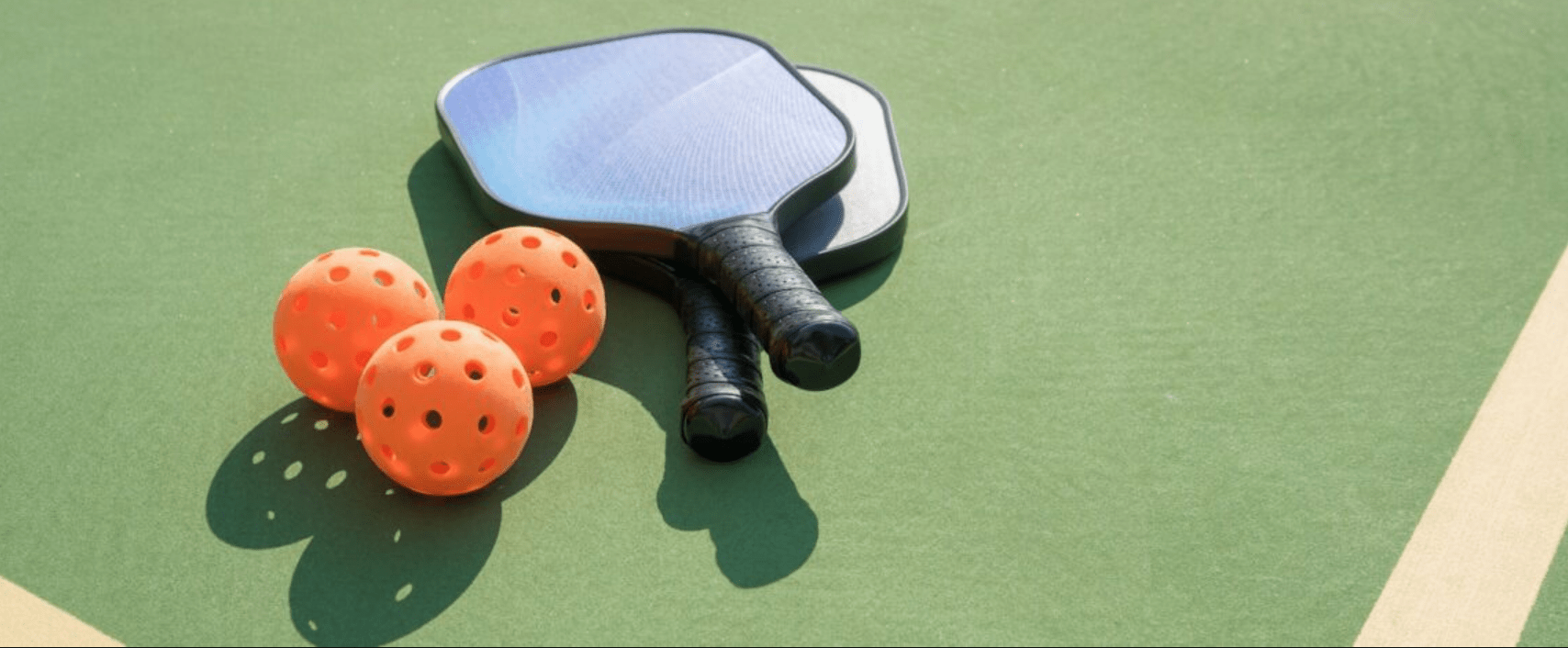Pickleball is a fun and accessible sport that combines elements of tennis, badminton, and ping-pong. It’s played with a paddle and a plastic ball on a compact court, making it easy for people of all ages and skill levels to pick up. If you’re new to pickleball and looking for a simple, beginner-friendly guide to the rules, you’ve come to the right place. In this comprehensive article, we’ll break down the basics of pickleball, from scoring to gameplay, so you can jump onto the court with confidence.
The Basics of Pickleball
Equipment:
Before we dive into the rules, let’s get familiar with the equipment used in pickleball:
- Paddle: Pickleball paddles are solid, rectangular devices with a perforated face. They come in various sizes and materials but must adhere to certain regulations.
- Ball: Pickleballs are lightweight plastic balls with holes in them. They are designed to be consistent and bounce predictably.
- Net: Similar to a tennis net but shorter, the pickleball net measures 36 inches in height at the sidelines and 34 inches in the center.
- Court: A pickleball court is a smaller version of a tennis court, measuring 20 feet wide by 44 feet long for doubles and 20 feet by 22 feet for singles.
Terminology:
To understand pickleball rules, it’s helpful to know some basic terminology:
- Serve: The initial shot that starts each point.
- Volley: Hitting the ball in the air before it bounces.
- Dink: A soft, controlled shot that barely clears the net and lands softly in the opponent’s court.
- Non-Volley Zone (Kitchen): The area within 7 feet of the net where volleys are not allowed.
- Fault: A violation of the rules, resulting in a point for the opposing team.
Now, let’s explore the fundamental rules of pickleball.
Starting the Game
- Serve: The game begins with one side serving the ball to the opponents. The serve must be made diagonally to the opponent’s service court, similar to tennis.
- Server’s Position: The server must stand behind the baseline and have both feet behind the court’s back boundary line (the baseline).
- Scoring: In pickleball, games are typically played to 11, 15, or 21 points, depending on the agreed-upon format.
- Winning: To win a game, a team must score at least 2 points more than their opponents.
Serving and Scoring
- Serving Team: The serving team serves the ball from the right-hand side to the opponent’s right-hand service court to start the game. Points can only be won by the serving team.
- Serve Rotation: The server starts serving from the right-hand side, and the server’s partner continues serving from the left-hand side when the serving team wins a point.
- Scoring Points: Points are scored by the serving team when the receiving team commits a fault, such as hitting the ball out of bounds or into the net.
- Side-Outs: If the receiving team wins a point, they gain the serve. This is known as a “side-out,” and it can happen multiple times during a game.
Playing at the Net
- Kitchen Rules: The non-volley zone (kitchen) is a critical part of pickleball. Players are not allowed to volley the ball while standing inside the kitchen.
- Foot Faults: Players must avoid stepping into the kitchen during play. A foot fault occurs when any part of a player’s foot touches the kitchen floor during a volley.
Serving Strategies
- Diagonal Serve: All serves in pickleball must be diagonal, which means you serve to the opposite service court.
- Underhand Serve: Unlike tennis, pickleball serves are always underhand. No overhead serves are allowed.
- Server Position: Remember to keep both feet behind the baseline during the serve. Your serve should clear the net and land in the opponent’s service court.
Doubles vs. Singles Play
Pickleball can be played as both singles and doubles. The rules generally remain the same, but there are some key differences:
- Doubles Play: In doubles, each team has two players—one at the net (the “up” player) and one near the baseline (the “back” player). The server starts the game from the right-hand side and continues serving from the left-hand side.
- Singles Play: In singles, each player is responsible for covering the entire court. The server starts serving from the right-hand side of the court and continues to serve from the same side until a fault is committed.
Conclusion
Pickleball is a fantastic sport that is easy to learn and a blast to play. While these rules provide a solid foundation for understanding the game, pickleball also has some nuances and strategies that you’ll pick up as you gain more experience.
In summary, the game starts with a serve, and the objective is to score points by serving, volleying, and strategically positioning yourself on the court. Remember the non-volley zone, be mindful of foot faults, and enjoy the fast-paced action of pickleball. Whether you’re playing for fun or in a competitive setting, understanding these basic rules will enable you to jump into the exciting world of pickleball with ease. So grab your paddle, head to the court, and have a smashing time!





